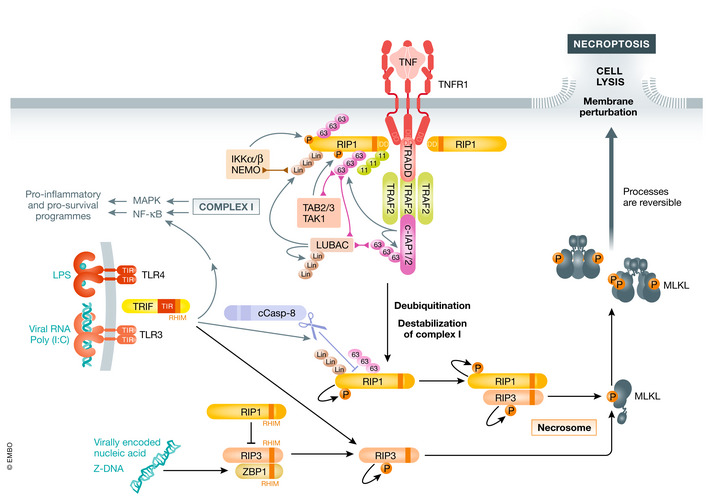Figure 2. Necroptosis.

Necroptosis can be induced by different stimuli. Upon binding to its receptor, TNF induces complex formation leading to NF‐κB and MAPK activation. Prolonged signaling and inhibition of caspases leads to RIP1 translocation to the cytosol forming complex II. RIP1 autophosphorylates recruiting RIP3. RIP3 phosphorylates itself as well as MLKL leading to MLKL oligomerization which induces membrane perturbation and cell lysis. LPS or Poly(I:C)‐induced TLR3/4 signaling also can stimulate necroptosis through adaptor TRIF, which engages RIP1 or RIP3. Sensing of Z‐DNA by ZBP1 leads to binding to RIP3 and cell death, which can be inhibited by RIP1.
